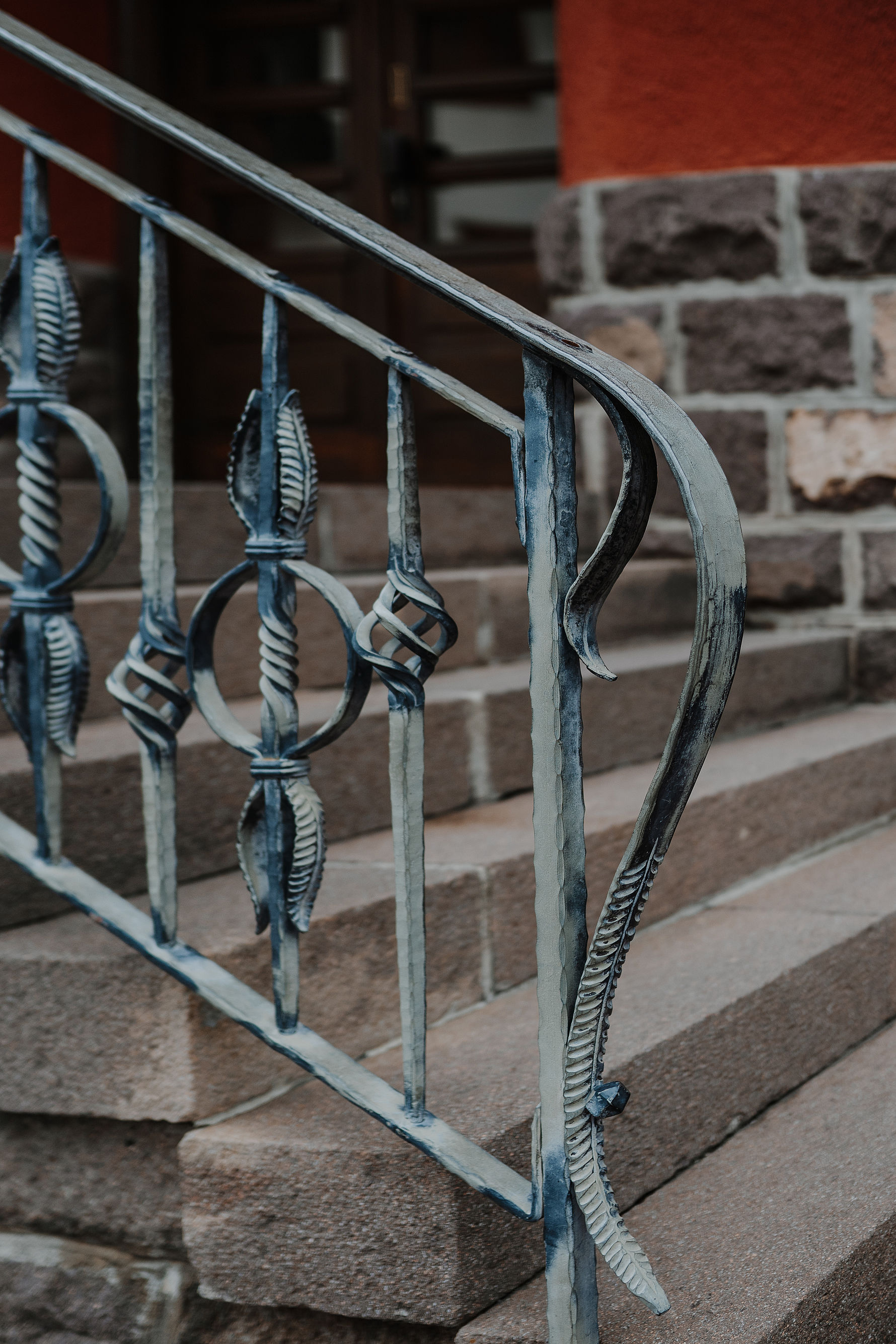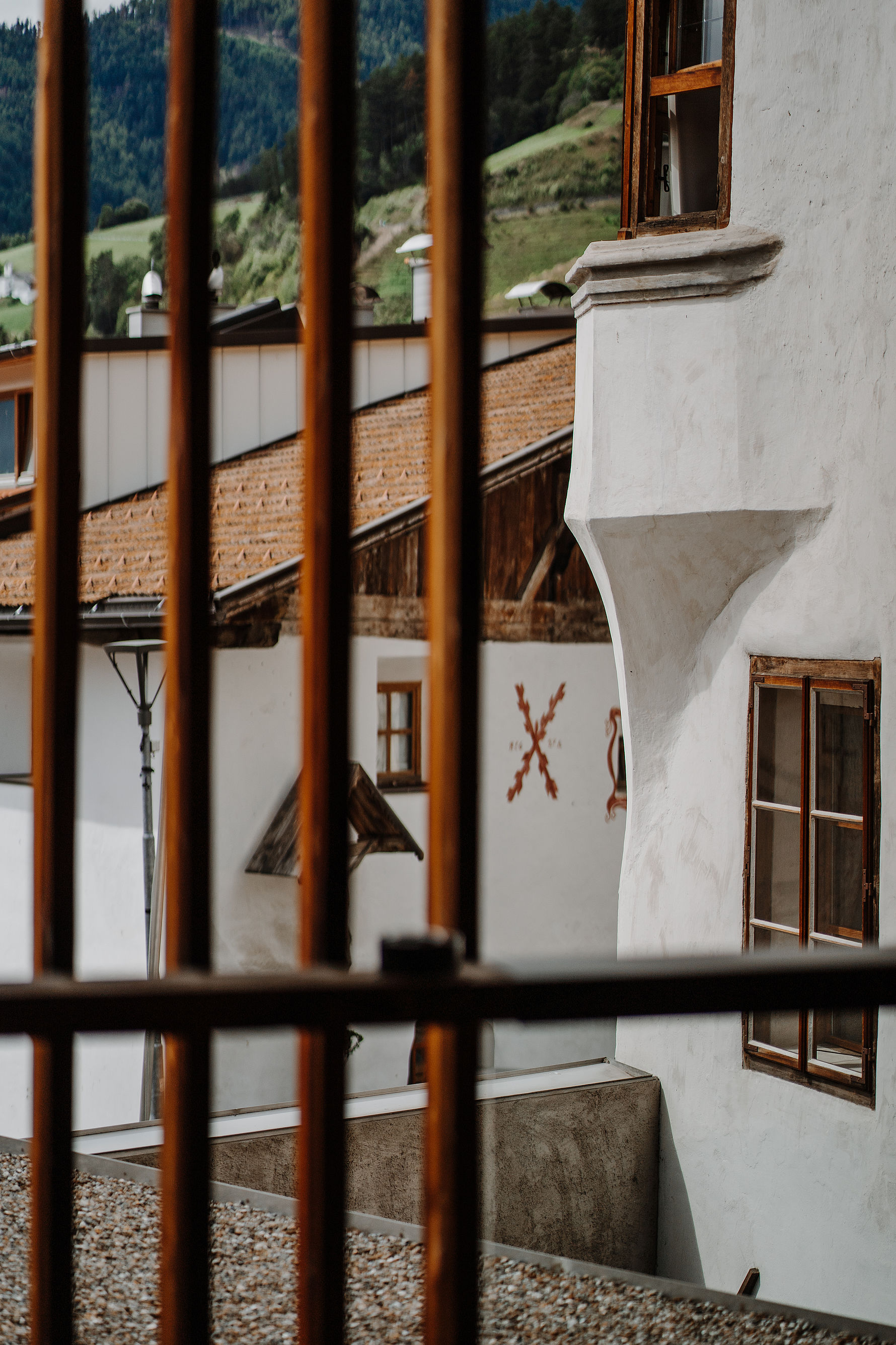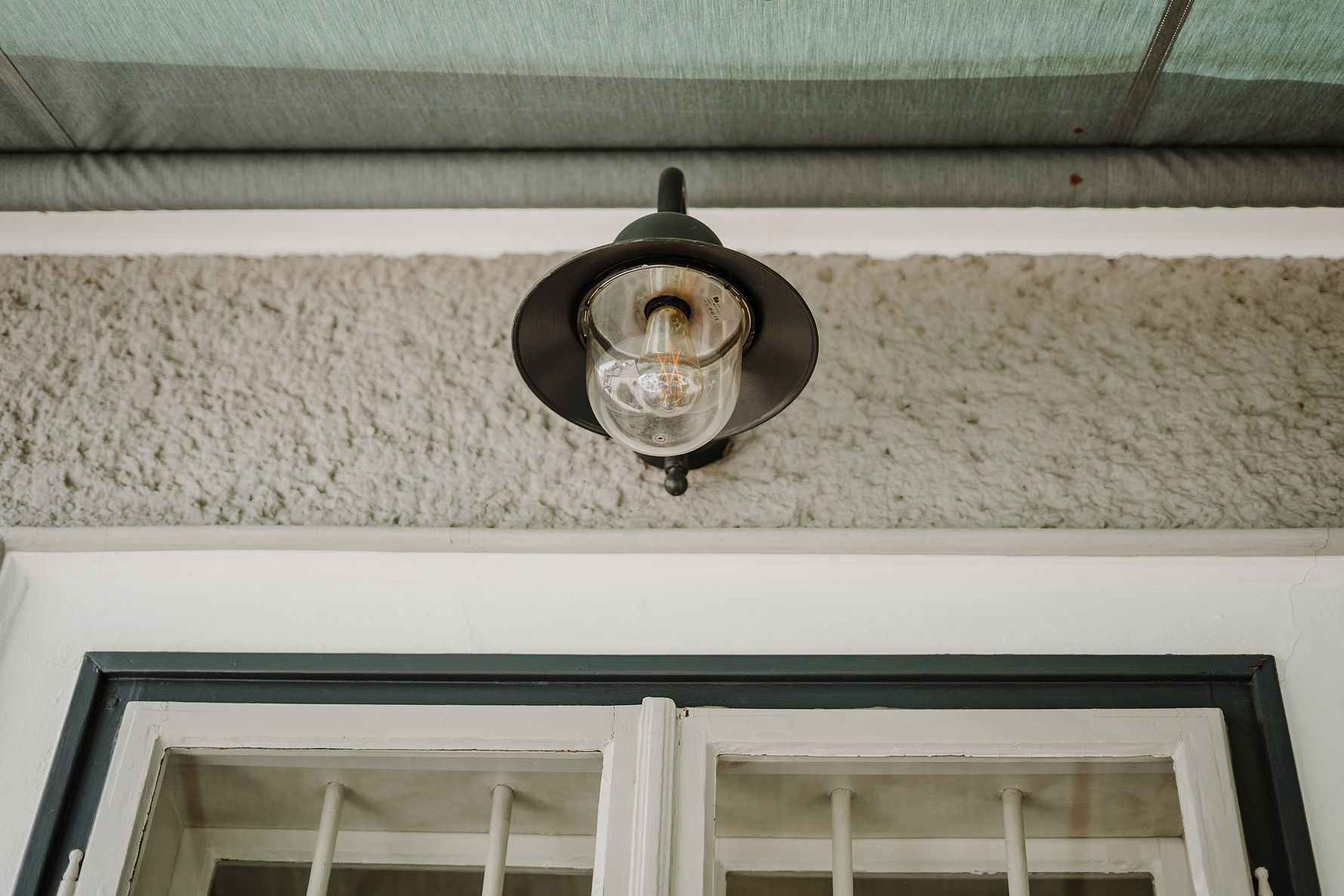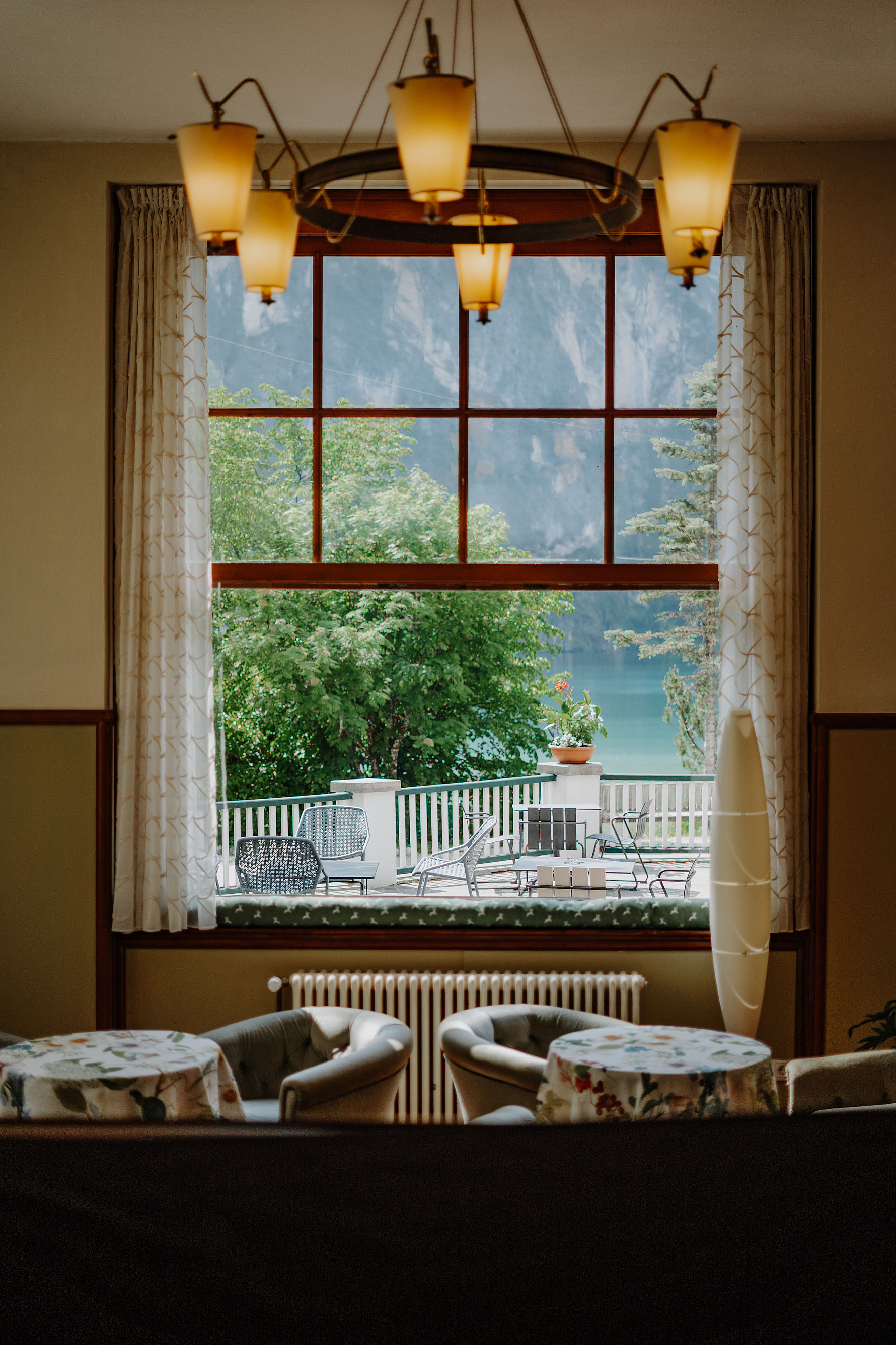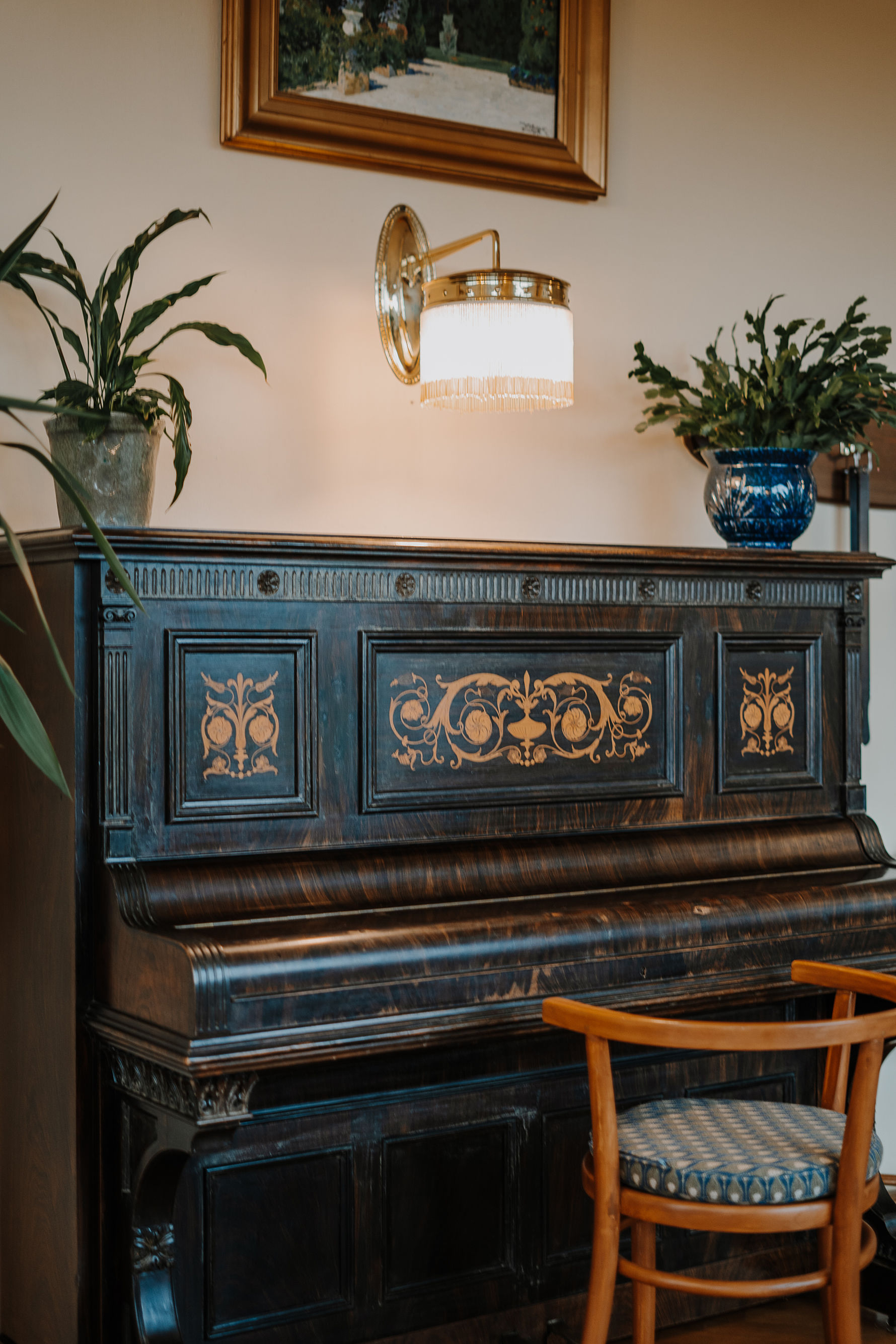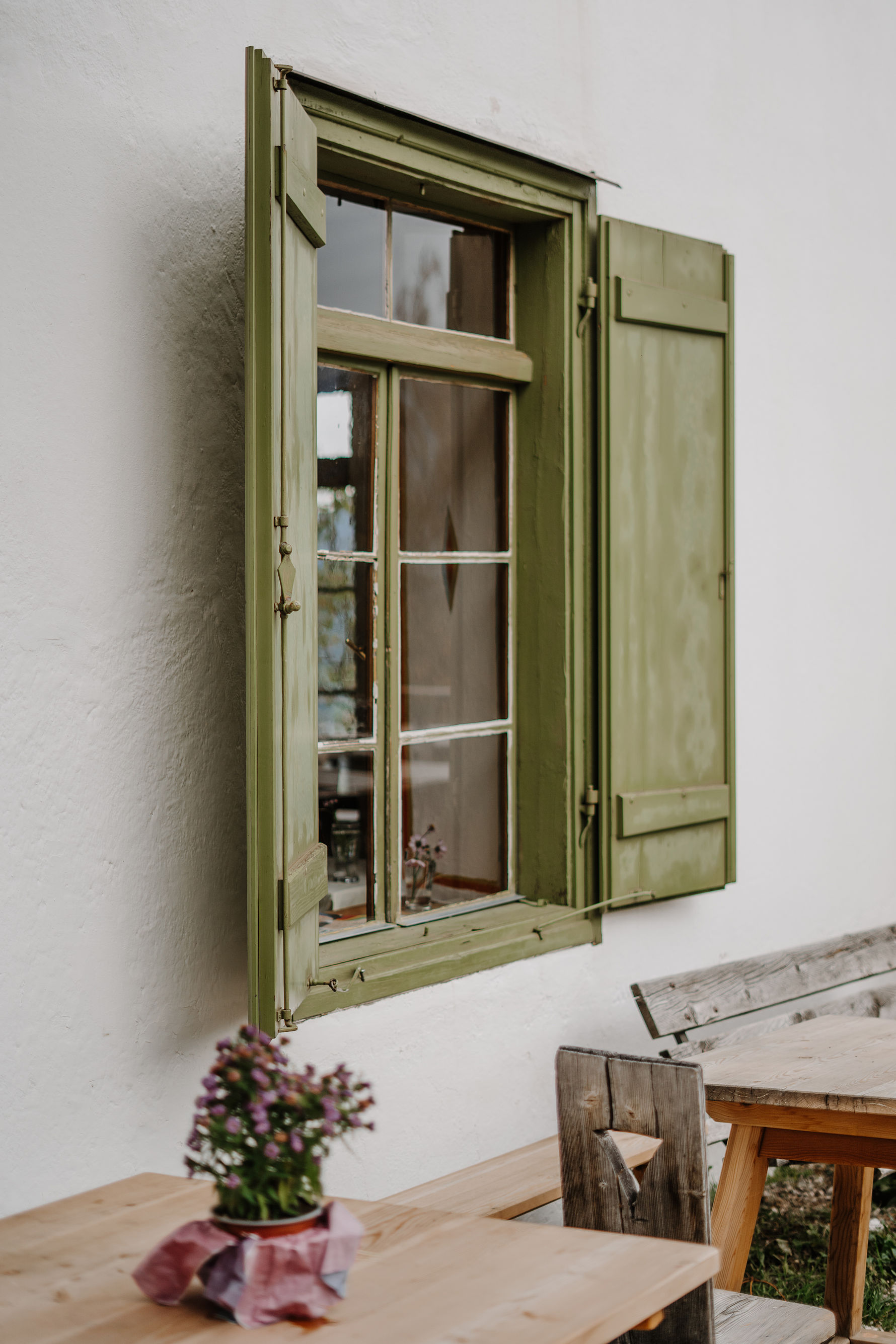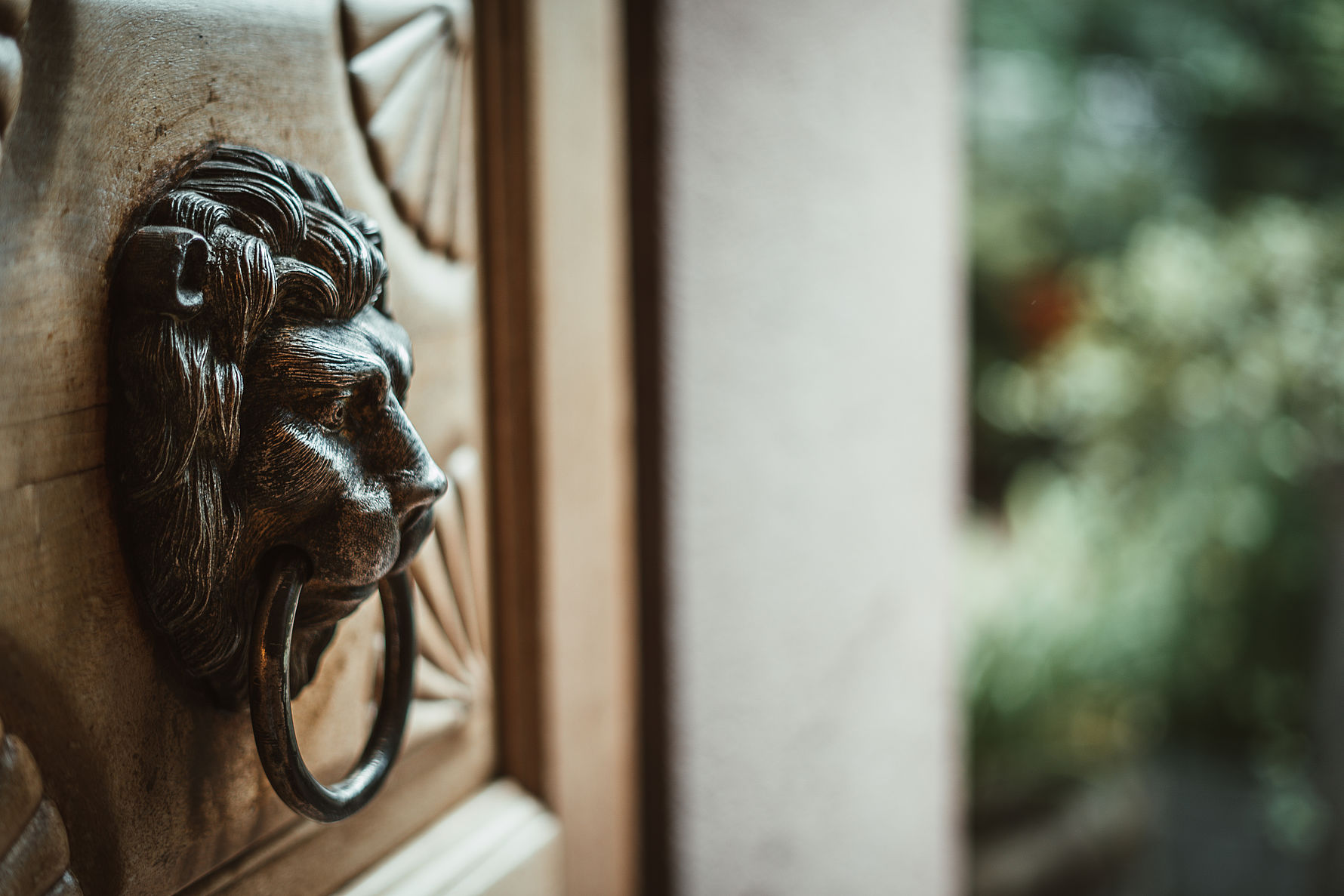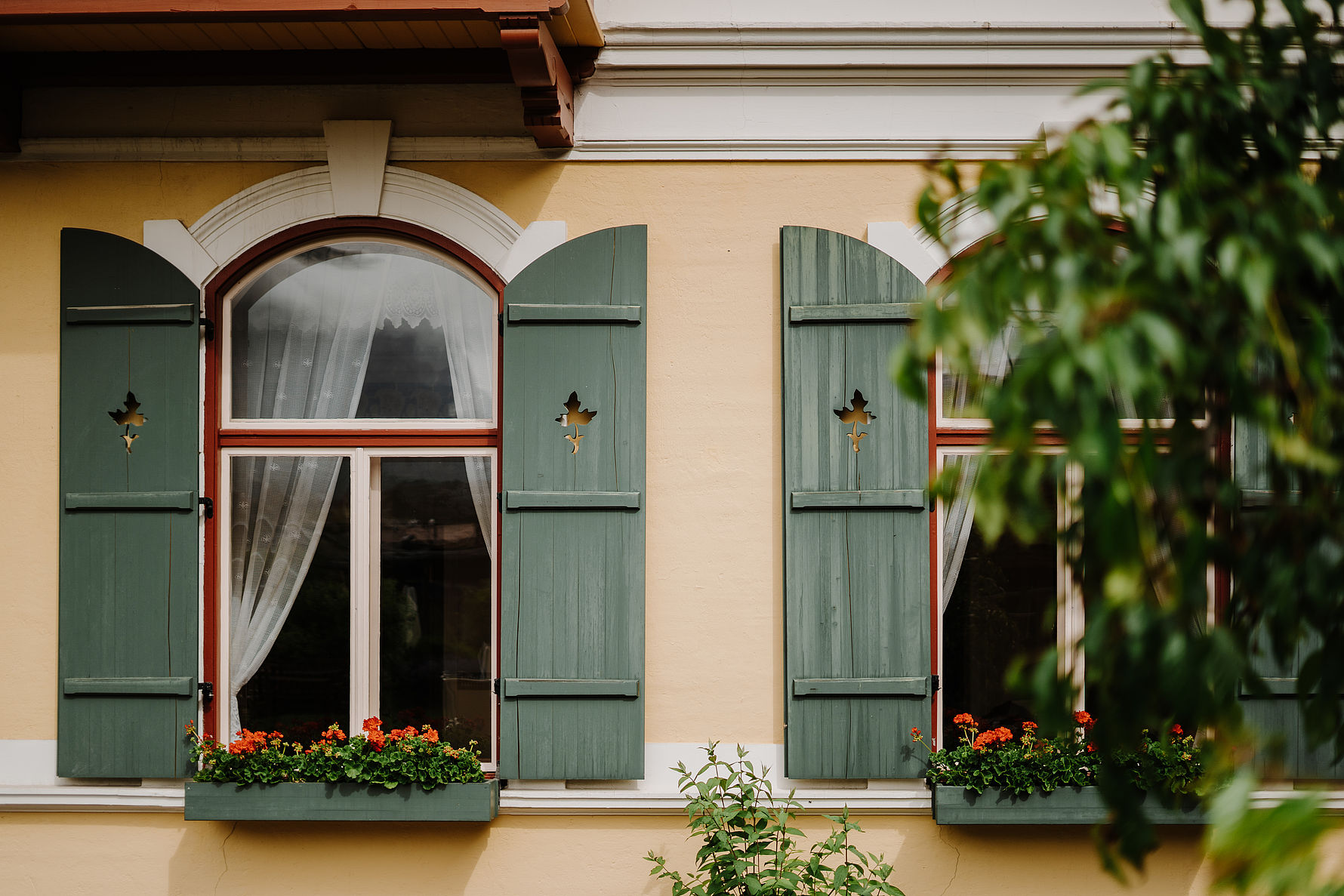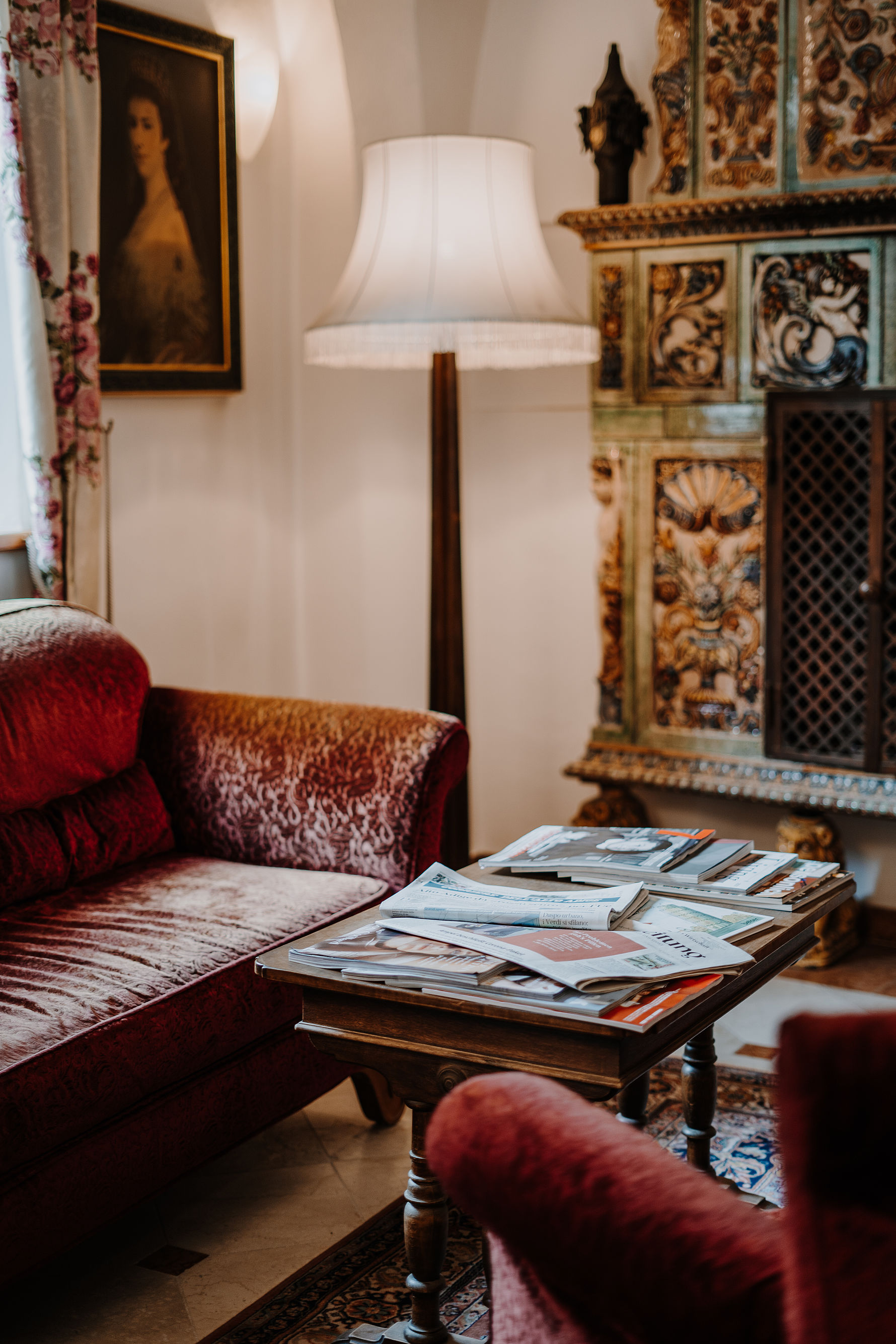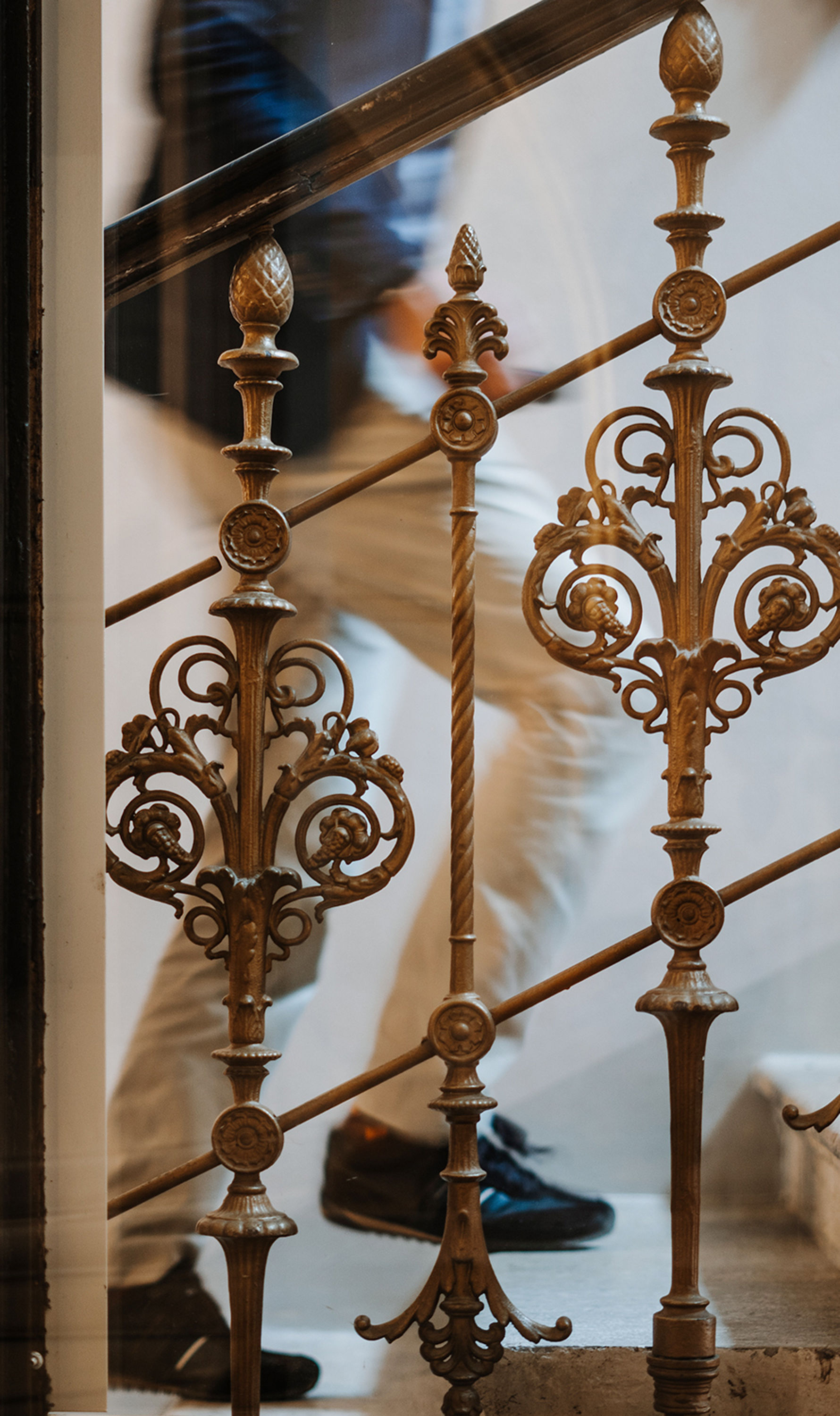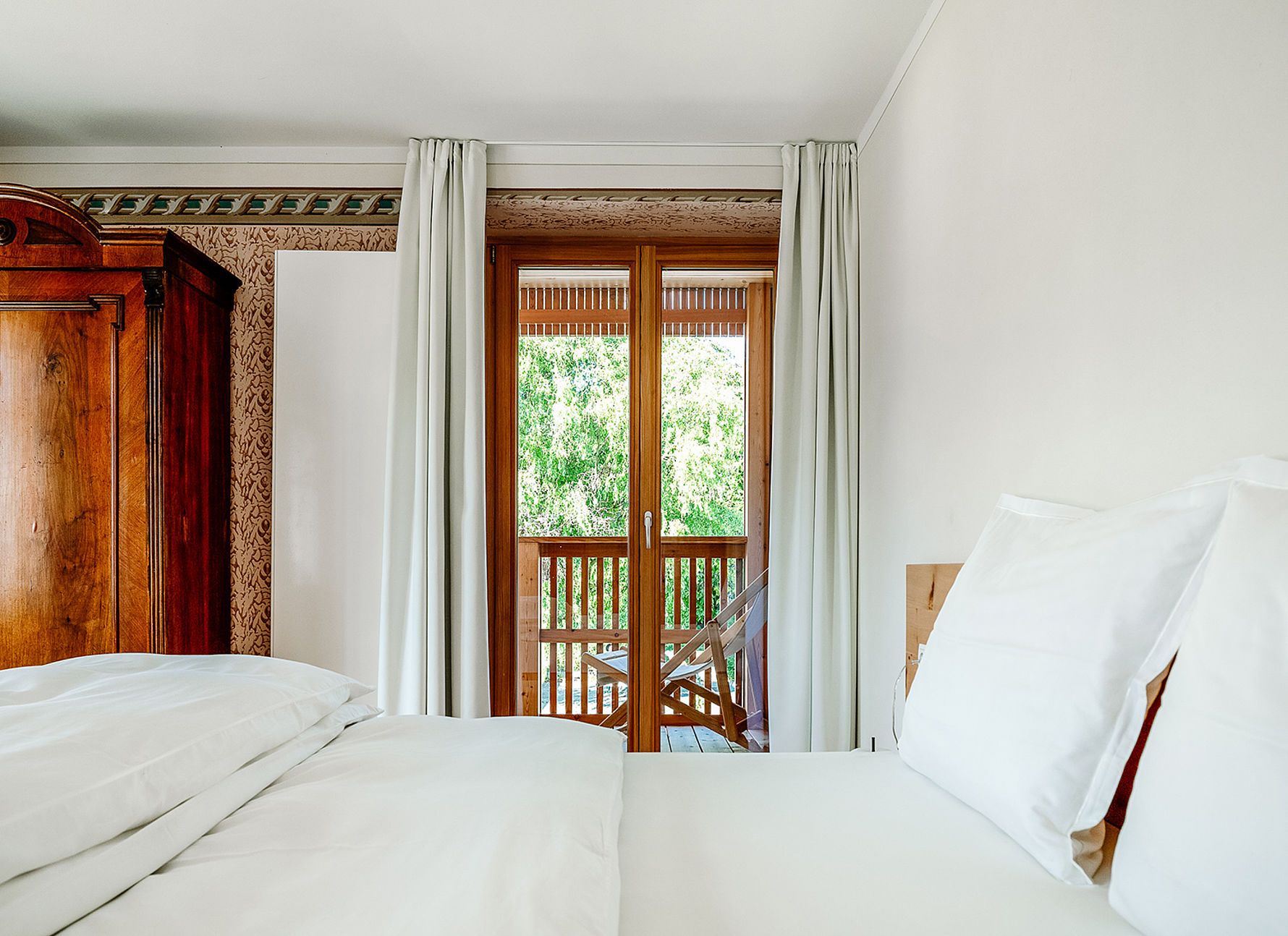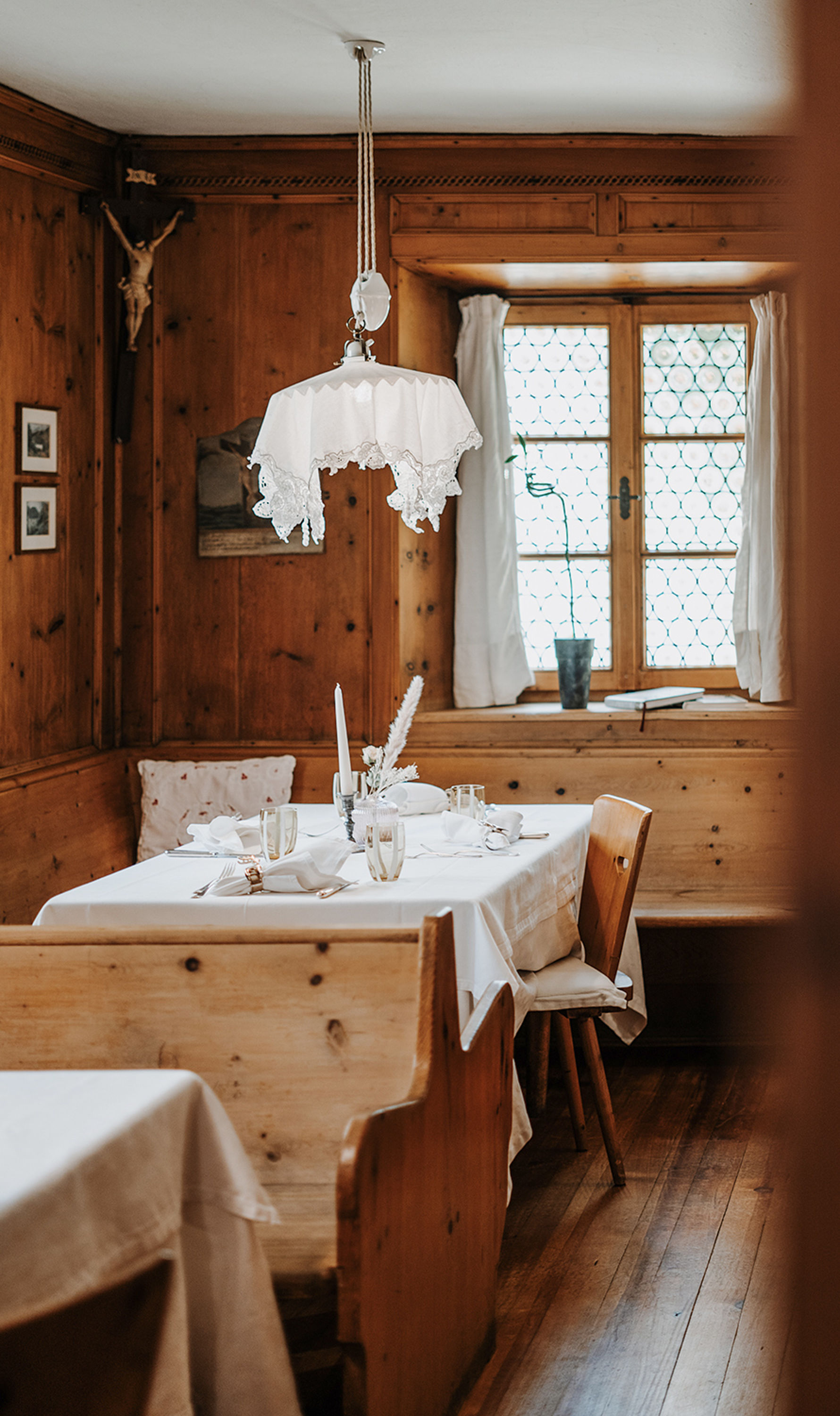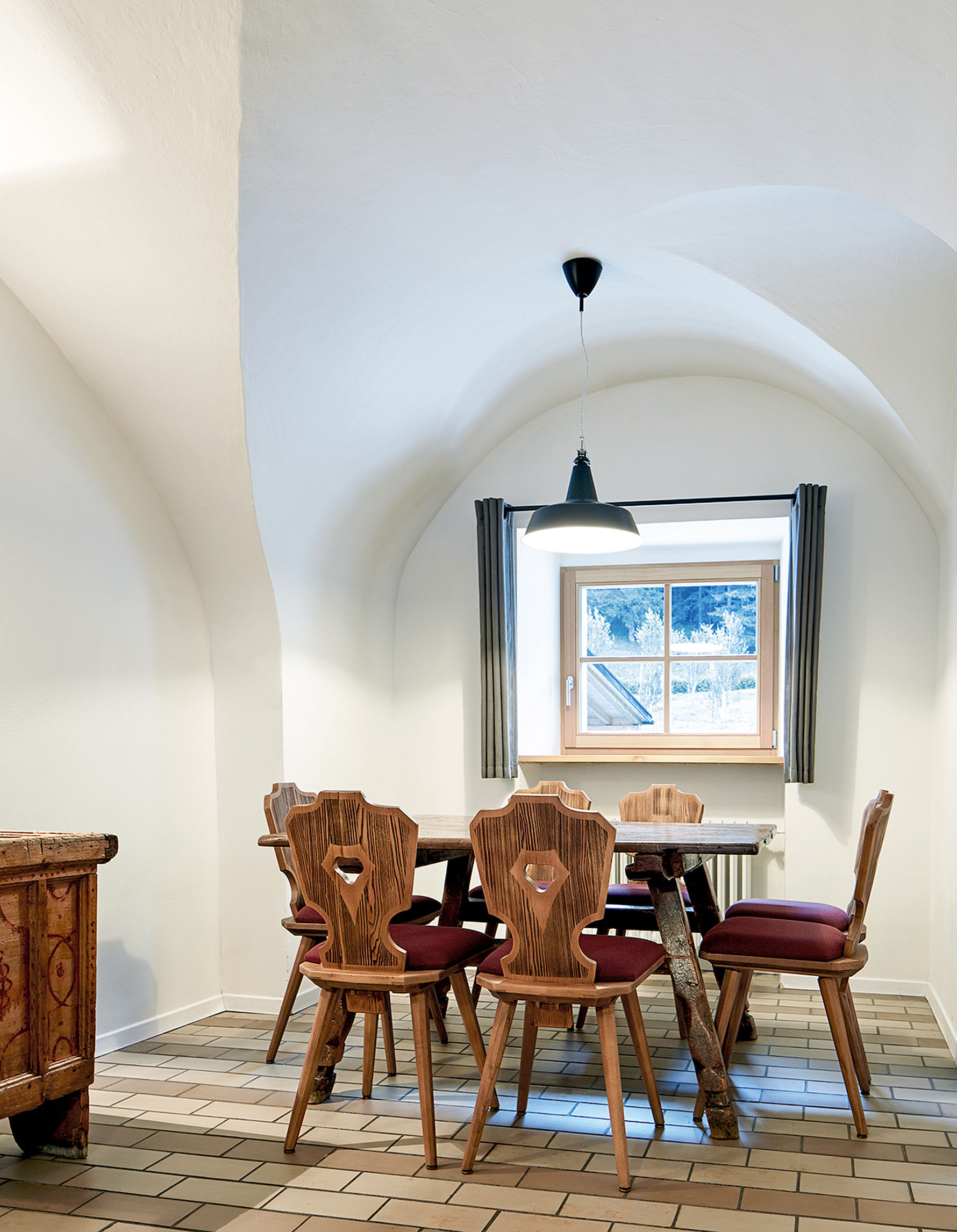Mara Theiner of the Ansitz zum Löwen talks about the three most important words in South Tyrolean architecture¾and how bathrobe selfies at the village well brought Burgusio back to life.

Historic: According to architect Elke Ladurner, there are three words you should bear in mind when it comes to rebuilding in South Tyrol: conserve, skip, and accept. So, since it was Elke Ladurner who oversaw the rebuilding of the Ansitz zum Löwen together with Stefan Marx: What was it that you conserved?

Mara Theiner
Hostess at the Ansitz zum Löwen
We left all the old things as they were. Everything that looks old in here is actually old, nothing was faked or altered. In contrast, we made a point of making all the new additions especially modern.
And what did you skip and accept?
We skipped any new architecture that would have outshone the old one. It was all about self-restraint: the new things had to allow the old things their space. This is why the old and the new never touch here. For example, the new staircase was inserted into the old main body as a whole. Modern furniture doesn’t lean against the walls, it stands in the middle of the room. And what we accepted in this context was a kind of symbiosis where both the old and the new find their space.

A new perspective on village life. Ansitz zum Löwen, Burgusio.
The old and the new may not touch, but does the future touch history somewhere at the Ansitz zum Löwen?
Everywhere! (Laughs.) Take the staircase, for example. The stairs are made of rough concrete and right next to them, we have historic walls with glass elements. In the rooms, we have carved wood ceilings and modern cupboards with minibars. The bathrooms have old vaulted ceilings and also a modern interior.
Tell us about that very special bathroom you have!
It’s in an old smokehouse where they used to smoke bacon and the typical South Tyrolean sausages, the Kaminwurzen. We thought about repainting the walls, but the soot is so deeply packed into the brickwork that the walls would never have become really white, no matter how often we’d repaint them. So we left them black. Some guests ask for this room specifically these days.
This building is almost 800 years old. How did it come into your family’s possession?
The house was built in 1236. Our family has owned it since the 1970s. My grandmother’s second husband wanted to borrow money from her to open a bar. Instead, she bought this house from him, which at the time belonged to his family but was in a very bad condition. After the purchase, she called for an expert to appraise the building. When he looked around, he said, ‘Are you even aware you have bought the most beautiful house in all Val Venosta?’ Still, it took a while until my family gathered the inspiration to do anything with it. Up until the 1990s, historic buildings like this one weren’t considered very interesting. Only when we decided to rebuild the Hotel Weißes Kreuz next door between 2011 and 2013, it occurred to us that we could include this building in the project
»What we accepted was a kind of symbiosis where both the old and the new find their space.«

Ansitz zum Löwen
Gently embedded between modern wood panelling, glass and béton brut, the Mansion zum Löwen in the village of Burgusio in the Upper Venosta Valley opens a window into an 800-year-old past.

»We skipped any new architecture that would have outshone the old one. It was all about self-restraint.«



The Ansitz zum Löwen is a building complex that has grown over centuries. It used to be a Gothic farmhouse, a princely ‘Ballhaus’¾not a ballroom building but a merchant house¾and a barn with a view. What is the connection between these three elements?
The Gothic farmhouse is the oldest part of the building: its backside, extending over the first two floors. It once belonged to the Pfister family, which is why it is known as the Pfisterhaus. It also accommodates the two oldest parlours, one of which was dated back to 1236, which is how we know when the house was built. In the front, you can see the façade of the princely merchant house that was built on top of the Pfisterhaus at some point during the Renaissance period, adding two more floors to the building. The ground floor contained commercial and storage rooms, while the episcopal guests stayed upstairs. At the time, the Ansitz belonged to the Fürstenburg, the local residence of the Bishops of Chur here in Burgusio. All of Val Venosta was under the influence of the Bishopric of Chur at the time. The barn was there to keep horses and carriages. We had to tear it down because we could no longer afford the maintenance. There is a building with suites in its space today. We used some of the old timber beams for it.
Guests who stay at the Ansitz zum Löwen and want to go to the Weißes Kreuz, including the spa, need to cross the village square.
At first, we were not at all sure how people would like the spa being in a building across the square. The idea was to assign each room at the Ansitz zum Löwen a large dressing room at the spa. But one of the guests started to cross the square in their bathrobe¾and others followed suit. For one or two years, of course, the locals would give them funny looks, especially the farmers. But now, ten years later, everyone has gotten used to the sight. Now, the guests take selfies at the village well or visit the village bar in their bathrobes. They regard the square as part of the hotel. I particularly enjoyed something that happened last year: Four guests wanted to visit the spa on the day the cattle were driven down from the mountain pastures. They just stopped in the middle of the square, wearing the bathrobes and spa bags, to watch the cows. (Laughs.)
You have created a wholly new culture.
That’s true. One could generally say that we have reanimated the village square. And not only through our house guests. The ground floor of the Ansitz also houses the village bar and the tourist information. Before, when the entire building was empty, there was hardly any life on the village square. Even though the bicycle route along the ancient Roman Via Claudia Augusta does lead through the square, cyclists never used to stop because there was nothing to see or do. Today, there is, and they do. The historic village centre has come back to life.


Ansitz zum Löwen
Burgusio 82
39024 Bugusio/Malles, South Tyrol
+39 0473 831 307
weisseskreuz.it/ansitz-zum-loewen


